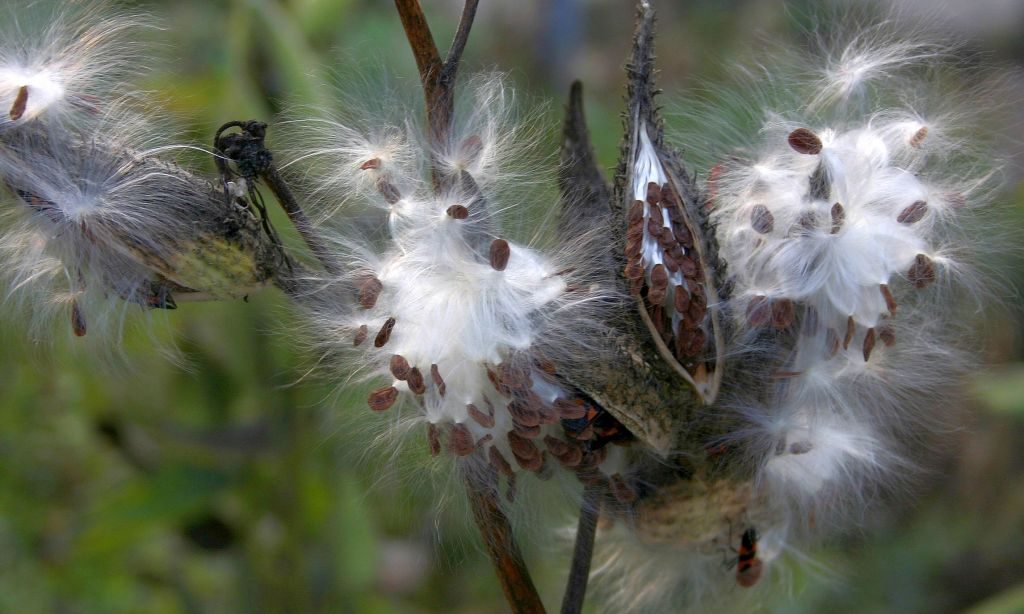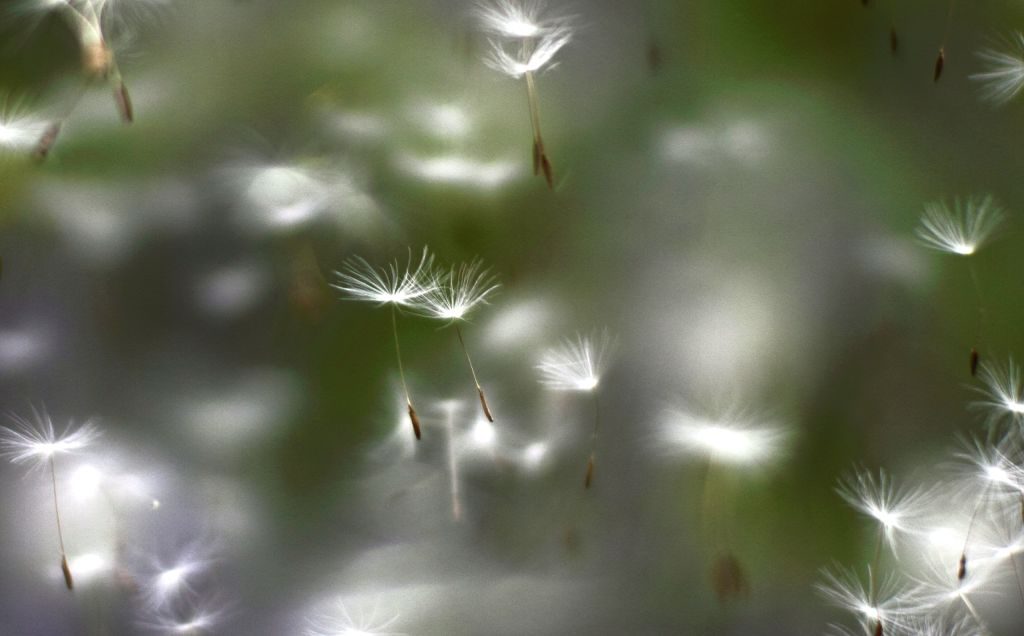
At this time of year milkweed pods burst open and the seeds disperse, carried on the wind by sprigs of fluff.

The fluff doesn’t look aerodynamic so how does the the seed stay airborne for so long? Recent studies explaining the flight properties of dandelion fluff may provide a clue for milkweed. Let’s look at dandelions.
Each dandelion seed is attached to parachute-like bit of fluff called a pappus. They look like this before they leave on their journey.

When a seed lets loose it dangles below the pappus and floats on the breeze for seven (7) feet or several miles. The goal is for the seed to land far from the parent plant.

In experiments in 2018, published in the journal Nature, researchers at the University of Edinburgh found that each pappus creates a separated vortex ring on the downwind side that keeps the seed aloft. This video shows how it works.
Read more in Dandelion Seeds Reveal A New Form of Aerodynamics in IFLScience.
Milkweed fluff is not the same shape as dandelions’ so a different mechanism may be at work.
The secrets behind nature’s small flying objects may help us design our own.
(photos by Kate St. John except … floating dandelion seeds are from Wikimedia Commons; click on the caption to see the original.)
Great to know about milkweed pods